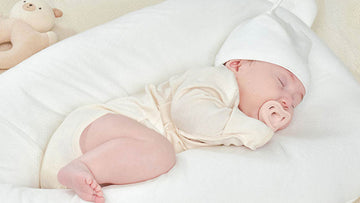Sleep deprivation is one of the toughest parts of early parenthood—but it doesn’t have to last forever. Starting sleep training at the right time can help your baby (and you) get the rest you both need. Here’s everything you need to know to begin sleep training your baby safely and effectively.
When to Start Sleep Training
Most experts recommend starting between 4–6 months of age. By then, most babies can sleep for longer stretches and don’t need nighttime feedings as frequently.
Signs your baby may be ready:
-
Falling asleep only when rocked or fed
-
Waking multiple times a night
-
Having no consistent nap or bedtime routine

Popular Sleep Training Methods
1. The Ferber Method (Graduated Extinction)
Let the baby cry for increasing intervals before checking in briefly.
2. The Chair Method
Sit near the crib and gradually move farther away each night.
3. Pick Up/Put Down
Pick baby up when crying, put them back down when calm. Repeats often.
4. No Tears Method
Soothing routines like rocking or feeding until the baby drifts off, gradually decreasing assistance.

Creating the Right Sleep Environment
-
Dark room with blackout curtains
-
White noise to mimic womb sounds and block outside noise
-
Cool temperature, around 68–72°F (20–22°C)
-
Safe sleep setup: firm mattress, no loose blankets, flat on back
Establishing a Sleep Routine
-
Consistent bedtime (ideally between 6:30–8:00 PM)
-
Wind-down routine: bath, story, lullaby
-
Put baby down drowsy but awake
Tips for Success
-
Stay consistent for at least 1–2 weeks
-
Keep night interactions calm and quiet
-
Avoid sleep props like feeding or rocking to sleep
-
Expect some protest—it’s normal!
What If It Doesn’t Work?
Every baby is different. If your baby isn’t adapting after two weeks, consider switching methods or consulting a pediatric sleep consultant.
Final Thoughts
Sleep training is not one-size-fits-all. The goal is to help your baby learn self-soothing skills while maintaining trust and comfort. Be patient, gentle, and consistent—and don’t be afraid to ask for help.


